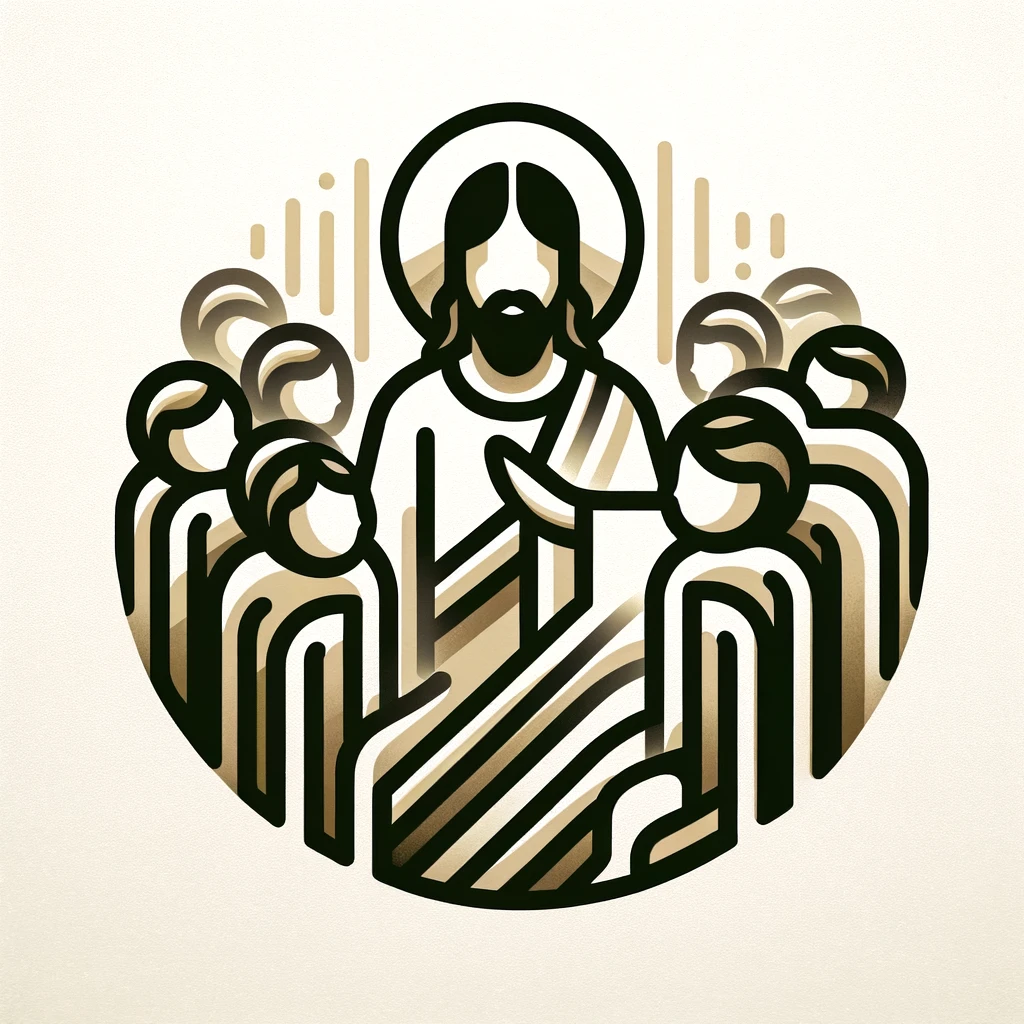Jesus: “The Psalms are a beautiful blend of poetry and song, a collection deeply embedded with musical elements and rhythm that reflect the heart’s deepest cries to God. They serve as a bridge between the human heart and the divine, expressing a wide range of emotions.”
John: “Master, when we read the Psalms, we notice their lyrical quality. How do these musical elements enhance our understanding and experience of prayer and worship?”
Jesus: “John, the rhythmic patterns, repetitions, and parallelisms in the Psalms are not just artistic expressions but tools that engage our minds, emotions, and spirits. They help us to memorize and meditate on God’s truths, allowing the words to penetrate deeply into our hearts.”
Andrew: “I’ve observed that many Psalms have instructions for the music director or mention musical instruments. What role did these play in the worship of ancient Israel?”
Jesus: “Andrew, these instructions and mentions of instruments like the harp, lyre, and cymbals indicate the Psalms were not only to be read but sung and played. Music lifts the words off the page, turning them into a communal and immersive worship experience, connecting us more deeply to God and to each other.”
Matthew: “The Psalms often use parallelism, where one line reflects or builds upon the previous one. How does this contribute to their musicality?”
Jesus: “Matthew, parallelism is like a melody played with variations. It emphasizes key themes, allowing the worshiper to ponder the same idea from different angles. This repetition is a form of rhythm that beats the message into the heart, making it memorable and impactful.”
Peter: “Lord, some Psalms have a Selah pause. What is the significance of these pauses in the context of music and worship?”
Jesus: “Peter, the Selah is thought to be a musical or liturgical pause, a moment for reflection on what has been sung or prayed. In music, such pauses allow the listener to absorb the message, to breathe and reflect on the divine mysteries. It’s a sacred space within the song for personal encounter with God.”
Simon the Zealot: “The Psalms also have different types, like hymns, laments, and thanksgivings. How do the musical elements vary across these types?”
Jesus: “Simon, each type of Psalm carries its unique rhythm and mood reflective of its purpose. Hymns might have a grand, celebratory tone, while laments carry a more somber, introspective rhythm. Thanksgiving Psalms might be buoyant and rhythmic, encouraging the congregation to join in gratitude. The musical elements are tailored to guide the worshiper through the spectrum of human experience, from despair to joy, in a way that resonates with the soul’s journey.”
Thomas: “But how can we, today, capture the musical essence of the Psalms without knowing their original tunes?”
Jesus: “Thomas, while we may not know the original melodies, the Psalms invite us to bring our own musical expressions to these timeless words. Through our contemporary lenses, we can interpret and integrate these ancient songs, making them resonate with our current experiences and emotions. The Holy Spirit guides us in this creative process, enabling the Psalms to continue being a living, breathing form of worship that transcends time and culture.”
Bartholomew: “It’s profound that after so many centuries, the Psalms remain a vital part of worship, capable of touching the deepest parts of our hearts.”
Jesus: “Indeed, Bartholomew. The Psalms are a divine gift, allowing us to express the full range of human emotions before God. Through their musical and rhythmic elements, they teach us that every aspect of human experience can be brought into the presence of God in worship. They are a reminder that in joy and in sorrow, in hope and in despair, we are never alone.”

